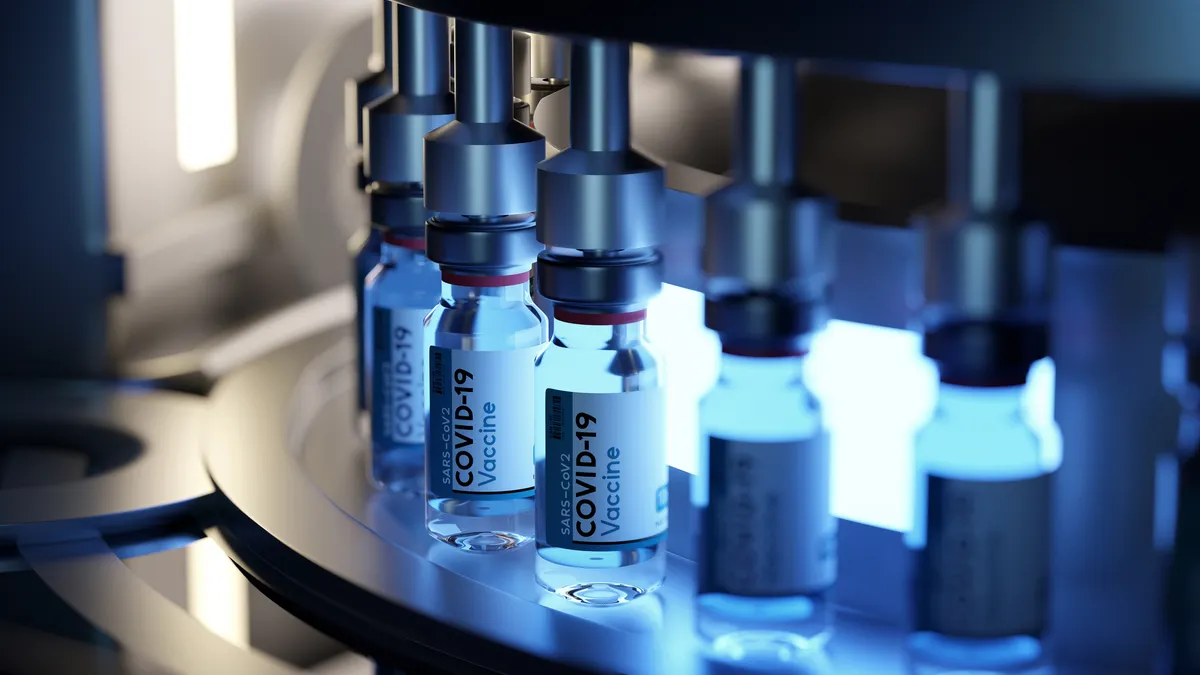Over $20 billion in international government funding and streamlined practices brought COVID-19 vaccines across the finish line. Just seven months after entering trials, the shots hit the market — 94% faster than the historical median vaccine development time

The changes that enabled quicker trials during the pandemic were born of necessity as research all but shut down while COVID-19 raged on. The question is: Can those same changes also help pick up the pace for today’s trials?
A report from the IQVIA Institute for Human Data Science, which focuses on lessons learned during the pandemic from the perspective of a CRO, found that while some factors were unique to COVID-19 trials — for example, the federal backing from Operation Warp Speed — there are many changes that organizations can make to help grease historically sluggish wheels and move trials forward more efficiently.
The IQVIA analysis looked at three phase 2 or phase 3 COVID-vaccine trials, all of which enrolled more than 30,000 people. All trials used a public/private framework and had achieved their primary endpoint before the analysis began. These trials were then compared to pre-pandemic phase 3 vaccine trials. Dozens of CRO professionals helped assess which changes accelerated trials and how they could be carried forward to influence trials down the road.
IQVIA identified the key factors that accelerated COVID-19 vaccine trials. Nicole Connelly, research director for pharmaceutical R&D at the IQVIA Institute for Human Data Science, said a few of these strategies stand out as a means to help today’s trials move more rapidly without compromising quality.
Boosting communication
Trials are often bogged down by decision-making.
“You as a CRO, for instance, want to approve a site list,” Connelly said. “You give that to your partner who's in charge of sites on the pharma side, and then they have to go to their clinical leadership and run it up through their analytical house and possibly repeat analysis and run it through a cycle of getting decisions that may be waiting for internal governance bodies or internal processes that then adds a whole long cycle time for decision-making.”
During the pandemic, decisions were made rapid-fire by joint teams, successfully eliminating decision-making delays.
“We saw that (COVID trials) had these real-time, full-time around the clock, joint teams that were working,” she said. “Those aren't feasible in non-COVID times — however, aspects of that are.”
One potential workaround is to modify how decisions are made to reduce hold-ups. Instead of running all decisions up the chain to upper-level leaders, determine if some of those same calls can be made by someone lower down in the organization, Connelly said. This requires some careful consideration.
“There's a balance there, and you'd have to really be thoughtful about the balance,” she said. “But there's a yield if you can get that balance better adjusted than where it sits right now.”
Eyeing new recruitment strategies
COVID-19 vaccine trials adopted unique recruitment tools to expedite enrollment and ensure that the people who joined the study reflected the diversity of the people who would ultimately be taking the vaccines, Connelly said.
“We were partnered with the government, and the Army came in and helped us out by setting up these mobile units, or trailers that were mobile recruitment sites,” she said.
Most trials won’t have U.S. Army resources to help them out, but they can make changes to help meet potential participants where they live by bringing in organizations to recruit patients where they are.
“Thinking uniquely about what sites you would use to recruit those (patients), not just your regular physician office, but the local pharmacy, and the library, senior citizen center, any given parking lot that you can think of — if you can kit it out in an efficient way you can be recruiting a lot of patients through these forums,” Connelly said. “That's really important for us to be flexible about where we're recruiting patients, as we’re trying to make sure that we (are) getting diverse patients recruited into these trials. That will continue to be important.”
“We saw that (COVID trials) had these real-time, full-time around the clock, joint teams that were working. Those aren't feasible in non-COVID times — however, aspects of that are.”

Nicole Connelly
Research director for pharmaceutical R&D at the IQVIA Institute for Human Data Science
Improving data efficiency
COVID-19 vaccine trials achieved another substantial time savings around database lock, the point where the trial database is finalized and ready for analysis.“The dramatic time savings achieved around database lock and data analysis was a function of both resource focus and process optimization to ensure a constant state of real-time data processing and readiness — specifically, the leverage of standard data dictionaries, a suite of digital/decentralized trial tools and optimized clinical staffing and highly focused resource management facilitated real-time data cleaning through the study,” according to the report.
Investing in establishing systems to optimize this process paid off.
“You’ve got all this data flowing in from all your sites,” Connelly said. “And it needs to go through a final quality check and be integrated and locked for analysis so that you can get your regulatory documents pulled together. That database lock can often take months. In this case, it took 24 hours. They were cleaning all the data and getting it into the right format as they went.”
Investing in improvements
If the goal is to increase the speed and efficiency of trials, an organization also needs to be willing to invest in improvements. This might include hiring more full-time employees in steps of the process where bottlenecks often occur. To do this, the organization must understand its processes well enough to spot those weak areas that can use a boost.
“When you increase resourcing, you can make things go faster,” Connelly said. “When you're being clear about your objectives for a trial and how fast or how slow you want it to go, there are specific places you can apply more human resources (to) get some real bang for your buck as far as speed goes.”
















